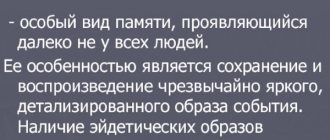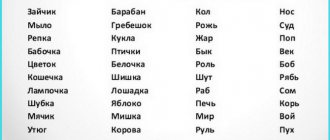What is coordination?
The term coordination is derived from the Latin “coordinatio”, which translates as “mutual ordering”. The coordination process is the coordination of the body's muscles, aimed at the best execution of the task. As motor skills develop, coordination improves, and inertia of organs that are in constant or intermediate work is formed.
When a person is constantly in motion, systematically repeats certain movements and exercises, complicates the loads, learns something new, then motor skills are improved and the motor centers of the brain are involved, and a stable connection is established between the brain and organs. Coordination in physical education is the ability to correlate one’s own actions, organize and coordinate them.
The brain sends impulses through a network of nerves, and organs, under their influence, perform certain movements.
Not every person has such agreement. Some adults and young children sometimes move awkwardly, gesticulate awkwardly, their gait is unattractive, they are unsteady on the ground, and they have problems with the vestibular system. Therefore, it is necessary to work on coordination systematically. To do this, in addition to sports training, it will be useful to improve the individual emotional background and practice attention.
Effective activities for developing coordination
There are many training methods for coordination and development of the vestibular apparatus.
To get started, just a few simple exercises are enough:
- The right hand makes the motion of the saw, that is, “back and forth,” and the left hand makes the movement of the ax, which means “up and down.” At some point, it is necessary to change the order of movement: the second hand must perform the actions of the first, and the first, accordingly, the second.
- Hands raised up. The left one depicts a circle forward, the right one depicts a circle backward. Then the limbs move in the opposite direction.
- You can test your coordination by doing a simple exercise: extend either hand with your palm open. Next, you need to press your little finger to your palm, while the other fingers should be in an unfolded state.
- It is required to make rotational movements with your hand to the left, and at the same time describe a circle with your foot in the opposite direction. Having arrived at a positive result, you should try to do the same with both hands and feet, sitting on some surface.
Age characteristics of coordination
The ability to coordinate one’s movements is directly dependent on a person’s age:
| Age (years) | Status of indicators |
| 5 | Unsatisfactory (except for children involved in sports and music). |
| 8 | Characterized by unstable speed and rhythm of motor activity. |
| 14 | The pace and clarity in the activity of all muscle groups is manifested in connection with the completion of the formation of the entire functional system of the body. |
| 15 | There is a slight decrease in activity. |
| 17 | Age of optimal development. The body is ready for productive work, training and acquiring skills. |
Over time, all movements are automatically harmonized and the muscles are coordinated with each other, functioning in a balanced and efficient manner. During physical education lessons, schoolchildren gain knowledge in athletics, gymnastics, participate in sports games and gain primary skills in working with sports equipment. Without good coordination, you cannot expect success in any exercise.
Therefore, the educational process is aimed at developing coordination of muscle work with the desires of students. The most favorable period for working on coordination is in the elementary grades. This is due to the peculiarity of the human psyche for the childhood period of development. A child is able to perceive and understand something only after seeing and performing a certain set of movements. This is the visually effective type of thinking characteristic of childhood.
Coordination abilities
The main indicators of coordination abilities are:
- speed of reactions;
- dexterity;
- equilibrium;
- orientation in space.
For proper training of the vestibular apparatus, classes that include elements of acrobatics and gymnastics are of great importance. During these exercises, it is necessary to increase the load and speed of exercises gradually. Exercises should be varied, and the pace should be increased over time. In this type of activity, spatial orientation develops easily, because in this case both visual sensations and muscle activity are involved.
Such exercises are carried out together with explanations and instructions from the teacher. The movement of the arms and legs occurs: in turn, synchronously, sequentially. It is easiest to coordinate movements when they are performed synchronously and in the same direction. It is more difficult to perform alternating exercises. The most difficult movements are in different directions and have different names. In exercises for legs and arms, you need to take into account the increase in difficulty.
In addition to everything, you need to do exercises where the arms or legs, or the body, are worked separately, and then add exercises that connect the movement of the body, arms and legs.
Something new is always required in coordinating and maintaining students’ interest in classes. When doing exercises, you need to use original starting positions, opposite movements, mirror actions, and changing rhythms. At first, when studying orientation in space, changing the position of body parts is carried out under visual control.
Then it is possible to clearly designate all possible directions of movement using words (relative to body parts). Coordination in physical education is also agility, which is the ability to quickly remake motor activity in a changing unexpected environment. In such activities, there are special requirements for the ability to concentrate and attention; sufficient reaction speed is required.
Coordination in physical education is a set of warm-up exercises.
Of the general exercises, the following workouts are most useful for agility:
- Quick change of position. For example, from a supine position, you need to sit down and straighten your legs, then bend your right leg at the knee, then your left; then stretch your legs again and lie down in the starting position.
- Requires coordinated action of three or more people. For example, transferring an object in a column.
- Game sports have an undoubted advantage in this regard.
The development of coordination skills and abilities also involves working on balance. It is more difficult the less space there is for support. Equilibrium always correlates with inertia from the previous movement, since subsequently there is an instantaneous transition to statics. For example, when performing a certain number of rotations, it is difficult to remain in balance, and even more difficult to remain motionless at the end.
Exercises that are useful for balance:
- Rotates 360 degrees in one direction and the other.
- Raising on your toes when your feet are placed together. Squats on your toes with a straight back are also effective.
- One leg is fixed in place and serves as a support, and the second is moved forward, to the side, and back. Perform the exercise one by one.
- Raising one leg, leaning on the other one. Then repeat with your eyes closed. In conclusion, you need to stay for 3-4 seconds. on one supporting leg.
The concept of coordination of movements, ways and means of their development
Essay
On the topic: The concept of coordination, methods and means of development
Student of Sevastopol gymnasium No. 10
Snopik Anatoly
Introduction
The word "coordination" means "coordination." When they talk about coordination of movements, they mean consistency in the work of muscles of different groups, aimed at achieving a certain motor effect, a specific goal. First of all, this is accuracy, proportionality, the ability to correctly dose force, direction, speed, distance of movements. Thus, the driver, when braking the car, coordinates the force of pressing the brake and steering actions with the speed of movement, the condition of the road, and the weight of the car; the carpenter also balances the force of pressure on the plane and the speed of its movement with the changing muscular sensation of the resistance of the wood; the blacksmith correlates the force of the hammer blow with the degree of heating of the forging, determining it by the color of the hot metal.
In the process of coordination of movements, the work of muscle movements and certain sensory organs is always coordinated.
Coordination of movements is important for many types of work activities. However, it must be borne in mind that coordination of movements is a very complex formation, which is mediated by many qualities, such as motor memory, flexibility or high mobility of joints, etc. In addition, coordination has both general and specific features for different movements peculiarities. Therefore, when identifying your own characteristics during the following tasks for coordinating hand movements, remember that you cannot judge the effect as a whole based on the indicators of one ability.
The effectiveness of activity is determined by many factors, and not only motor ones, but also knowledge - abilities, skills, etc.
Coordination is the ability to coordinate the movements of different parts of the body. With good coordination, the individual elements of movement are combined into a single motor action, which is performed economically, effortlessly, plastically, and clearly. Coordination of movements helps to cope with a motor task correctly. Coordination is required where the motor task facing us has a number of complications, but in all cases it is assumed that, despite these complications, we will be able to successfully and correctly solve this problem with its help. What does a correctly executed movement mean? A correctly executed movement is a movement that actually leads to the required goal and solves the problem that has arisen.
1. How can you improve coordination of movements?
You can develop qualities related to coordination of movements in different ways and means. Let's name the main ones.
Improving various components of motor coordination: improving the accuracy of muscle efforts, increasing reaction speed - motor memory, coordination of actions, occurs in the process of systematic training in various sports.
You can develop such an important quality as coordination of movements during specially organized classes. A system of special physical exercises has been developed aimed at practicing precise hand movements, increasing muscle and joint sensitivity - qualities that contribute to the rapid mastery of the work skills of a draftsman, radio equipment assembler, surgeon and other specialists.
Below are examples of such exercises to improve the coordination of movements of both hands.
Coordination of movements develops well in the process of mastering the game of various musical instruments that require a certain dexterity of hands (piano, button accordion, etc.), as well as in the process of modeling, drawing, knitting.
Full development of motor coordination occurs only after 13-14 years.
2. A set of exercises to develop coordination of movements
Coordination exercises:
Somersaults forward
Execution: monitor the tight grouping.
Task: warm-up, coordination of movements.
Somersault forward with jump up
Execution: during the jump, fully straighten your legs, arms straight - the distance between the palms is 15-10 cm.
Task: coordination of movements with dynamic load.
All somersaults must be performed on special mats. In this case, it is necessary to remove all unnecessary objects that can be hit.
Forward somersault with a jump up (with a 180 degree turn) – a back somersault with an upward jump (with a 180 degree turn).
Task: coordination with dynamic movements, setting up a turn from a standing position.
Back somersaults
Execution: quick support of the hands under the shoulders, can be done without grouping.
Task: coordination of movements when moving backwards.
General education exercises
1. A set of exercises for developing coordination of movements, which can be used as a warm-up for subsequent more resource-intensive exercises. These exercises can also be used for daily morning exercises.
These exercises should be performed at the beginning of training in order to warm up the muscles and joints of the limbs for more difficult dynamic exercises. To increase the coordination effect, you can close your eyes while doing the exercises.
Some other principles are also important in the development of coordination:
No bad habits - smoking, alcohol abuse;
Regular sports activities (team sports, bodybuilding and fitness, athletics, martial arts and wrestling, skiing, skating).
Regular night sleep (7-9 hours a day);
Regular, balanced nutrition (3-5 times a day).
1. Make rotational movements with your outstretched right hand, and horizontal movements with your left hand. Do the exercises in two counts.
2. Make circular movements with your outstretched right hand, and vertical strokes up and down with your left hand for two counts.
3. With your outstretched right hand, make rotational movements, and with your left hand, draw an isosceles triangle. Do it for three counts.
4. Arms at chest level, elbows bent, palms down. Turn one hand clockwise, slightly straightening the elbow joint, the other - counterclockwise.
5. Right hand on the head, bent left palm turned to the stomach, with the right hand make up and down movements, with the left - circular movements in the frontal plane near the stomach.
And a few more simple exercises
Stand on one leg for one minute to maintain balance. It is better to spread your arms to the sides. The head turns left and right. The gaze is not fixed and does not help maintain balance. When improving coordination skills, you can close your eyes.
Exercise with a ball. Standing opposite a wall or door on one leg, you need to throw the ball and catch it after it bounces off the surface. You only need to look at the ball so that your body gains the ability to maintain balance.
Jumping. Standing on one leg, you need to jump and land on the other leg. The next jump is landing in the starting position. The exercise is completed within a few minutes
3. Coordination abilities
Coordination abilities are an integral attribute of our everyday and sports life. With insufficient development of coordination abilities, incorrect elements of movements vital for a person are formed, which he uses in various activities - running, jumping, climbing, throwing. Thus, with insufficiently developed coordination, you will not be able to achieve a wide swing, a strong push of the projectile, or a high trajectory of its flight, which allows you to achieve a throwing range; insufficiently developed coordination will lead to the habit of running on half-bent legs, without using energetic push-off, and will make it difficult to master a good running speed; Without good coordination, it is impossible to run along a winding path without bumping into the trees standing along its edges. The ability to correctly coordinate one’s movements is the key to correctly performing all the movements suggested to him. And the degree of load on any part of the body, the accuracy of execution, and the development of the entire organism as a whole depend on how correctly the exercises are performed.
A person’s coordination abilities perform an important function in controlling his movements, namely coordination, ordering of various motor movements into a single whole in accordance with the task at hand.
Developed coordination abilities lead to greater density and variability of movement control processes and to an increase in motor experience.
This is a complex of the next level of complexity, including exercises for developing coordination and general physical exercises for developing flexibility.
Repeat each exercise at a maximum pace 10-30 times, depending on the tone of the body. You can try alternating knee raises, bending forward and backward, and other exercises with your eyes closed.
Exercises with gymnastic balls of various sizes and weights have a beneficial effect on coordination. The weight of the ball is selected individually so that the trainee does not expend excessive effort when performing the exercise. Coordination exercises are performed both at a smooth pace, with an emphasis on stretching, and at a dynamic pace - various throws and passes to a partner.
You can also do exercises with your eyes closed: touching various points of the face and body with certain fingers.
muscle movement coordination
Conclusion
When carrying out targeted development and improvement of coordination abilities, young athletes master various motor actions much faster and rationally.
A high degree of development of coordination abilities has a positive effect on the acquisition of new motor skills. Developed coordination abilities are maintained for a relatively long period of time. It has been established that there is no relationship between the level of physical development and the level of development of coordination abilities, and therefore there is reason to engage in exercises aimed at developing coordination of movements.
Developed coordination abilities influence the pace, type and method of mastering movement techniques, as well as its further stabilization.
Basic indicator of coordination
You should understand what indicators measure coordination:
- movement accuracy;
- variety and complexity of movement;
- time;
- accuracy of response to an object in motion;
- rhythm;
- ability to maintain balance;
- ability for spatial orientation;
- rationality of action (expediency and economy);
- accuracy.
These indicators are practiced in physical education classes. However, the main and most comprehensive indicator in assessing coordination should be considered the ability to quickly rearrange the entire motor program. To analyze individual coordination abilities, it is necessary to observe a person for 2-3 years.
It is possible to predict the prognosis for the development of coordination in the future from childhood. A favorable time for predicting the development of coordination in the category “bodily agility” (gymnastics) is 6-7 years. Category “subject dexterity” (sports games) 11-12 years old.
How to develop coordination of movements?
Coordination can be developed through training. There are different methods for developing motor coordination. The most basic method is to repeat the movements many times. Another way is to perform movements at low speed and with minimal load.
Coordination can also be developed by adding new movements that will be unusual for a person. During the training process, the complexity of coordination exercises should be gradually increased. Increase demands for accuracy and consistency of thinking.
The high effectiveness of training is ensured by a quick change of position, for example, acceleration (running) from a kneeling position, or an exercise such as “head to head”, actively used in American football, in which two athletes lie on the ground head to head towards the demarcation line , after which the coach suddenly throws the ball to one of them, and the athlete who took possession of the ball must cross the line as quickly as possible. To do this, he needs to catch the ball without looking, without fixing his attention and gaze on the ball, change his lying position to a vertical one and, bypassing the opponent, cross the line. In fact, this exercise is performed with lightning speed.
Another method of developing coordination is to change the speed or tempo. To do this, you need to introduce rhythmic combinations into the training process. Another great example is the running of wide receivers in American football, which is characterized by instant stops, changes of direction and acceleration.
Also, changing the way you perform exercises can help develop coordination. For example, jumping rope not on two legs, but on one. Throwing the ball horizontally and much more. Also a very effective way to develop coordination is to exercise with non-ergonomically shaped equipment, for example, lunges with a sandbag instead of dumbbells, or squats on a balancing platform. Doing exercises with a partner or several participants also develops coordination. In pairs you can perform jumps, turns, bends, squats and lifts.
Methods for developing coordination
Coordination in physical education is capabilities that represent readiness for optimal regulation of movement.
Methods for developing coordination include:
- variable exercise;
- a game;
- competition.
In physical education classes, game techniques are the most effective for working on coordination. The competitive spirit encourages you to exert great effort to achieve your goal. The most effective way is collective sports games. They help to develop the proportionality and clarity of the movements performed. During such activities, skills of rapid movements under changing circumstances are formed.
It is also important to conduct relay races, since they are organized within a certain time frame. Such activities using basketballs are especially effective.
Work on the vestibular apparatus is an extremely significant factor for overall development, as well as improving the ability to navigate in space. It provides a basis for learning new spatial movement skills.
The main methods for studying coordination abilities: testing and observation. Achievement in coordination is typically assessed using age- and health-related tests.
A set of coordination exercises
To train coordination, there are many exercises and entire complexes designed for training various groups.
The simplest complex for working with teenagers and groups of pensioners may be the following:
| A set of exercises to improve coordination abilities | |||
| № | Exercise | Dose | Recommendations |
| 1 | Ball toss | 5-6 min. | — |
| 2 | A few steps, somersault forward | 4 times | — |
| 3 | Throwing a ball at a target | 15 times | Each time increase the distance to the designated goal. |
| 4 | Jumping with a turn | 3 min. | 180° or 360° |
Types of coordination
Coordination is an innate ability. It, like everyone else, needs to be developed and improved. It synchronizes movements; with poorly developed coordination, it will be difficult to lead a normal life. It should be noted that this human ability deteriorates more than others when aging.
Without coordination, muscle movement is impossible. It is developed in almost every sport. Innate natural ability can be improved at every age.
Coordination happens:
- Intermuscular: the relationship of the muscles involved in the movement (intensity and order of muscle contractions).
- Intramuscular: muscles and their nerve impulses.
Intramuscular coordination training
If intermuscular coordination can be called the development of movement technique, then intramuscular coordination is correlated with the broader concept of the general physical training of an athlete. Therefore, the goal of training aimed at developing this type of coordination is the development of power potential to its maximum. Often, an intramuscular coordination training program is designed in such a way that an increase in strength occurs without gaining muscle mass. Mainly, the athlete is tasked with performing exercises at high speed in a short time, which stimulates the neuromuscular system. Thanks to this, the fastest activation of the maximum number of motor units occurs, that is, movements are performed with maximum frequency. The following will help achieve a similar effect:
- eccentric strength exercises, from which the muscle begins to lengthen under the influence of load, subject to submaximal tension. Jumping, performing exercises with both arms or legs at once in the contraction phase, or with one of the arms/legs in the muscle stretching phase are good options. They should be performed at a fast pace, with an intensity of 120 to 150%, in 3-5 approaches with 2-5 repetitions and a three-minute pause.
- concentric strength exercises are used to improve coordination of movements
, in which the muscle contracts, maintaining maximum tension. You can use in training: acyclic variations of jumps, exercises in interaction with a companion who takes part of the load on himself during the eccentric phase of movement. Exercises are performed with 100% intensity, at maximum pace, with 5 sets of 1-2 repetitions and a pause of 3 minutes.
- development of reactive strength, using cyclic and acyclic jumps, at an explosive pace, with an intensity of 120 to 150%, in 2-3 or 3-5 approaches, with 6-10 repetitions and a break of three minutes.
Of course, the optimal option for developing coordination would be to engage in a sport that activates two types of coordination at once: intramuscular and intermuscular, for example, CrossFit. The main thing is not to let your muscles adapt; this can be easily achieved by coming up with new variations of well-known exercises.
Don't miss interesting news and events in the telegram channel: https://tlgg.ru/fitbarnews
Factors influencing coordination of movements
Motor functions require many qualities that are acquired through training. By doing the exercises day after day, a level of skill is achieved, speed and strength increase.
Factors on which coordination depends:
- adequate motion analysis;
- difficulty in motor exercises;
- level of other physical capabilities;
- bravery;
- age;
- general preparedness and more.
Coordination also includes a sense of time, a perception of space where there is rhythm and a certain tempo that can change. It is based, in turn, on the ability to maintain attention, focus, and concentrate. Developed coordination requires intelligence, resourcefulness, and composure.
Who needs to develop coordination of movements?
Apart from athletes, absolutely everyone needs this skill or ability, because the implementation of all human movements depends on it. As stated at the beginning of the article, motor coordination is an important skill that should be sufficiently developed in everyone, but some people need an excellent level of this motor function. For example, dancers without developed coordination simply have no chance. For athletes of any kind of martial arts, athletics, all team sports, even in motorsports, coordination plays an important role. By the way, the work of the vestibular apparatus is also one of the components of coordination. Sailing is a craft in which coordination is sometimes at the forefront of human ability.
Recommendations for developing coordination
Development of coordination is carried out in the following directions:
- Performing different exercises, where there is a novelty in their reproduction from lesson to lesson.
- Increasing the complexity of assigned tasks, working on accuracy.
- Development of balance.
- Vestibular function training.
Methodological recommendations: quick change of positions (stand up, sit down); originality and unexpectedness of the position (running from a sitting position); change in speed with change in sequence order; using objects of different weights and volumes in training.
Practical tips:
- When working with young children, you should start with static exercises that simultaneously develop spatial orientation, balance and visual assessment of your own actions.
- A systematic approach to the frequency of training, since with long breaks there is a decrease in motor activity.
- When organizing classes, diversify the set of exercises and games as much as possible.
- Creating the most friendly environment in the group.
Coordination Development Tools
The main means of training coordination are novelty and difficulty of execution. Difficulty increases by, for example, reducing time, increasing distances, making objects heavier, and so on. Coordination activities cease to be effective when their implementation becomes automatic. Then their value disappears, as each, studied in full and done under the same conditions, does not contribute to development.
In addition, other motor skills besides coordination need to be worked on. The coordination ability of an individual plays a significant role in regulating movements. It promotes coordination and control of various motor activities depending on the assigned tasks.
A person needs to interact with the external environment, it is necessary to predict its possible transformations, to anticipate future events; and based on this, create your own model of action focused on achieving your goals.
Improving motor functions is the main goal of physical education. This task naturally implies the development of coordination in all its forms. First of all, training is necessary for children and older people. Work with other groups in this regard depends on the professional orientation of the latter.









